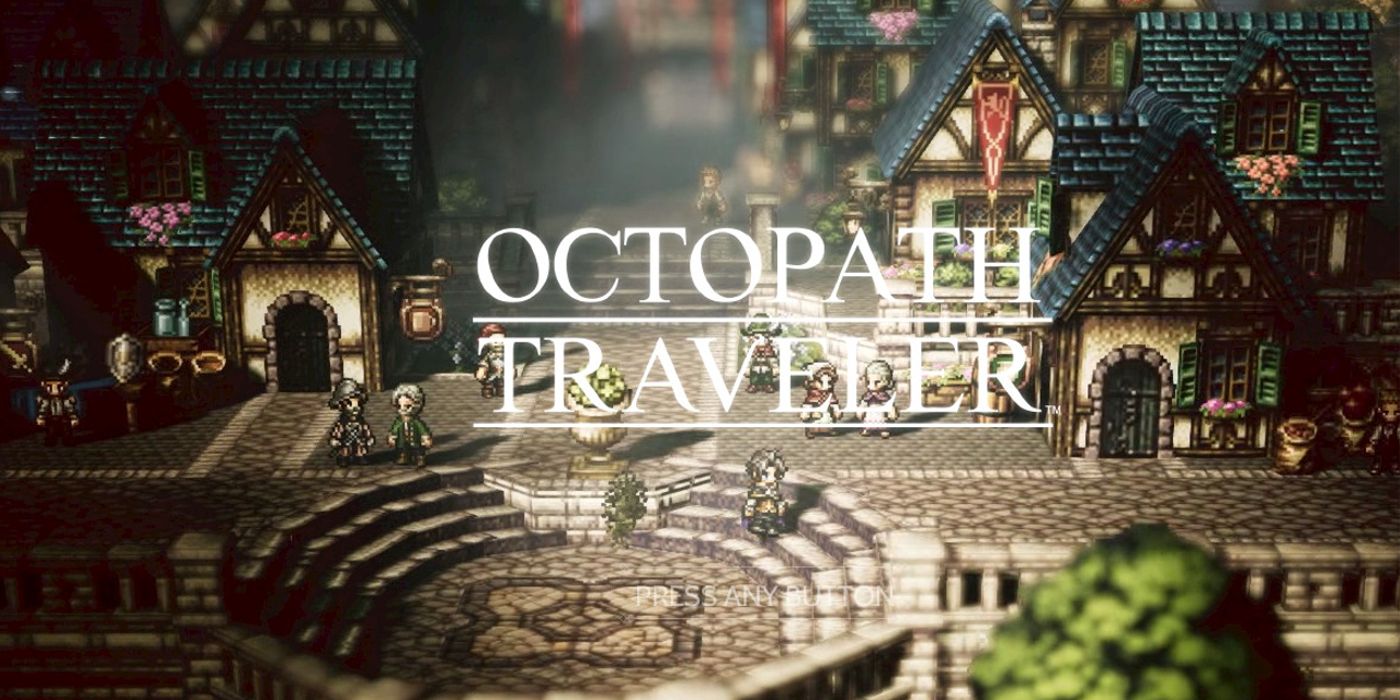
There’s a mesmerizing flow to the turn-based battles in Octopath Traveler, a harmonic cadence of decisions that swallows up your attention, and this sensibility extends throughout nearly every facet of the game. Indubitably paying homage to the classic Square JRPGs on the SNES, and Final Fantasy games in particular, Octopath Traveler is more than mere bait for a generation’s endless nostalgic appetites — it’s a sprawling, massively time-consuming delight, managing to both honor its forebears as well as provide just the right amount of innovation, and features one of the best combat systems in recent memory.
Its title refers to the eight playable characters scattered throughout the world of Osterra, and you may start off the game with any one of them you like. It’s slightly strange that the weight of this single decision isn’t articulated more clearly: the character players begin the game with will determine the first few dozen hours of play. Now, that’s not to say that the game’s content is hard-gated, or even that you need eight separate saves to see the entirety of Octopath Traveler. It just means that, on the map of the game world, character choice represents the starting point for the entire adventure, and you’ll get to find and recruit the other seven as by traversing its geography.
Related: Pode Review: An Enthralling And Peaceful Puzzler
Octopath Traveler puts its best foot forward with its visual presentation, which is a combination of nicely detailed and animated spritework and a tilt-shifted, 3D landscape with 16-bit textures. It’s a stunning and unique design concept that looks even better in motion than in screenshots; using an ever-present vignetted camera, the screen focuses in on your controllable character’s movement while animated background and foreground textures fade in and out of focus. The effect is somewhat similar to some stop-motion animated films, and it’s completely absorbing, making Osterra feel like an intimate interactive storybook. There’s a moment during an introductory plot-line where an NPC brings your character to a secluded cliff side, commenting on the beauty of the vista, and it’s impossible to aesthetically disagree.
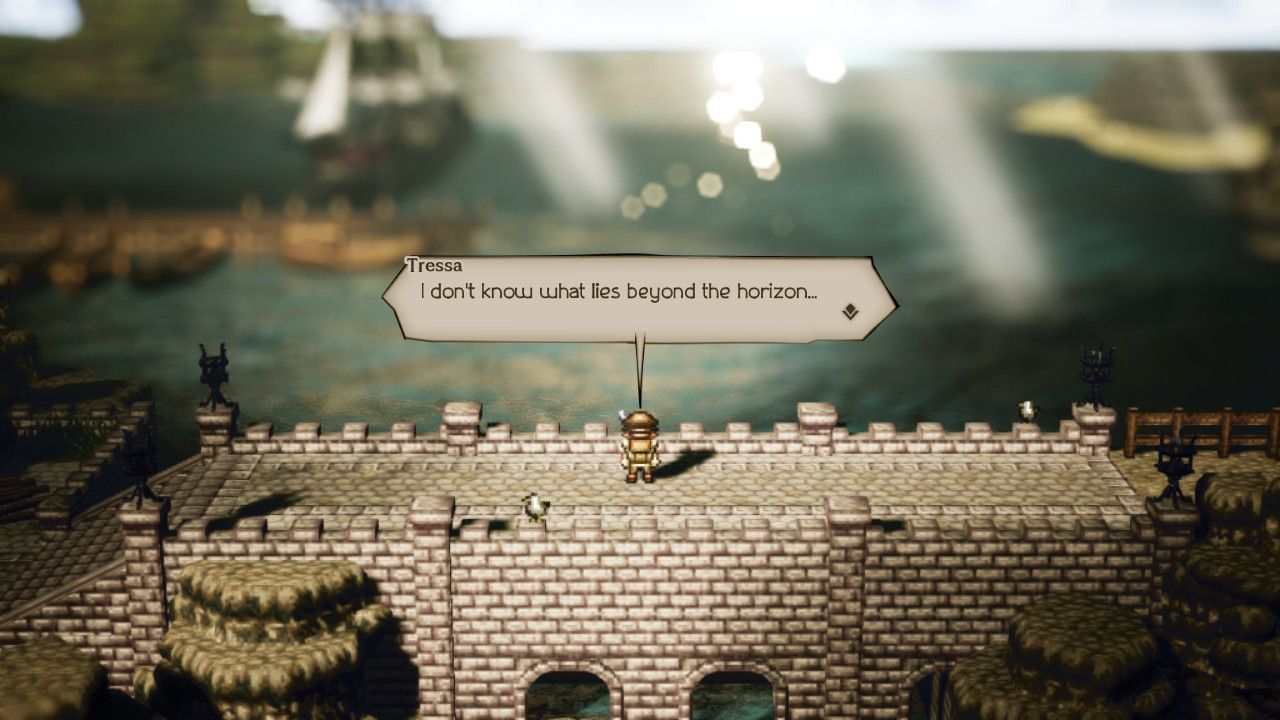
Accompanying this impressively idiosyncratic visual design is the symphonic soundtrack by composer Yasunori Nishiki, and it’s highly reminiscent of Nobuo Uematsu’s work on Final Fantasy. That’s not tto say that it’s a superior score, or anywhere as iconic as Uematsu’s, but it’s effective, varied in emotional tone, and aligns motifs to the game’s story. There are also subtle cues and references to the most memorable themes in Final Fantasy, though these are subtle enough so as not to be distracting.
Each of the eight characters has a rambling narrative spanning multiple areas and cities throughout the continent. You are given free reign as to which of those narratives you care most to pursue at any given moment, and can guide your growing crew to and fro, fast-traveling to cities or getting distracted by treasure-filled caves and dungeons. It all feels like a road trip, and even includes special occasions to listen in on “travel banter,” which finds your discovered team members in conversation with each other about present events. Sadly, these dynamic portions of the script are usually the only such interactions; while a character is pursuing their specific story concerns, they remain isolated in their own cut-scenes. Essentially, this means that the order in which you build your party does not greatly affect the story on the whole.
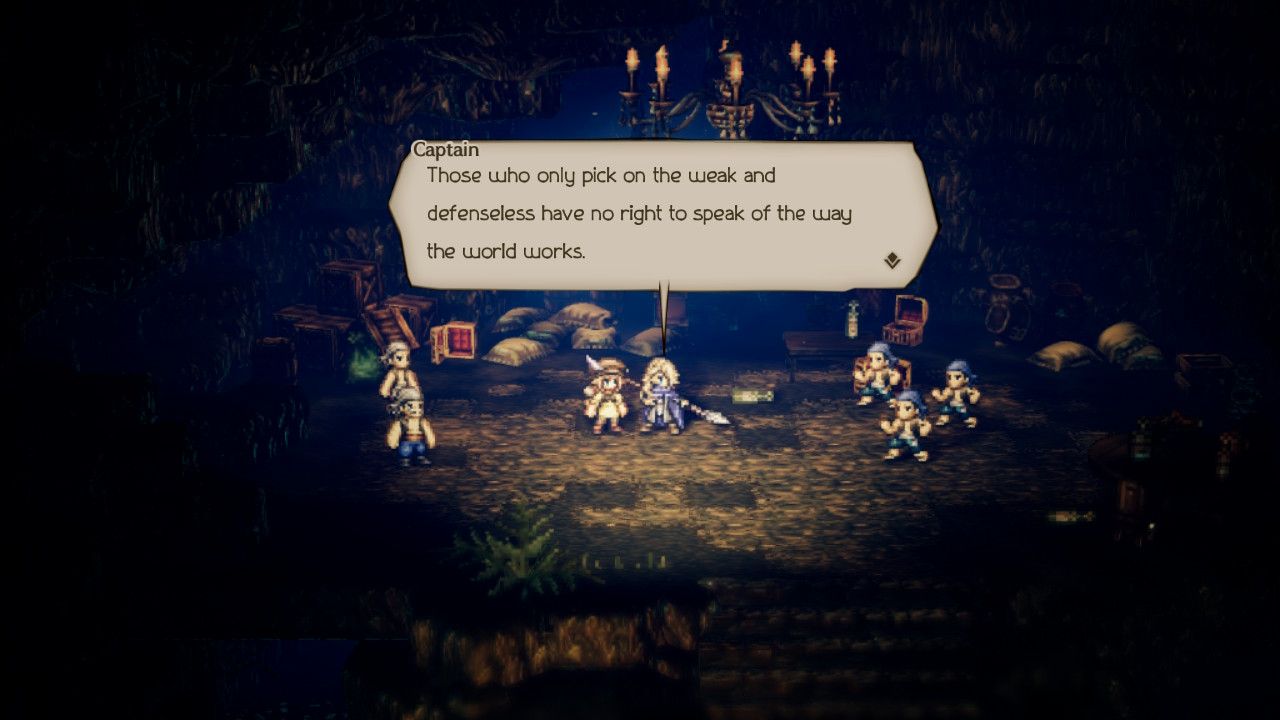
It’s one of several details that distinguish Octopath Traveler from modern Western RPGs like Dragon’s Age, games which couldn’t possibly get away with a comparable lack of emergent narration. Overall, though, this aspect doesn’t affect enjoyment of the game in the least, with the focus being on discovering new areas and armaments, and on completely losing yourself in the meaty turn-based combat.
Just like the old Final Fantasy games, you’ll be spending plenty of time sussing out the best way to fight enemy mobs and level up, all in preparation for the many boss encounters. The combat system in Octopath Traveler is a big selling point, and is perfectly tuned to careful decision-making. Utilizing an enemy weakness mechanic that is somewhat similar to the Shin Megami Tensei series — where individual beasts all bear specific weaknesses, and are rendered dazed if you exploit them to the fullest — it’s simple on the surface, but randomized combinations of enemies can make for daunting encounters that are satisfying to effectively solve. Considering that you have eight characters that can be swapped into a party of four, all of whom can learn new skills and make use of bonus-laden items and weaponry, there’s a dizzying amount of potential and opportunities to optimize techniques. This isn’t a game where the player will just hold down the A button to keep selecting “attack,” and as you experiment with the BP timing system and level up your party you’ll find that new approaches to combat keep appearing, pushing you to pull unused characters back into play to level them up in tandem with the rest of the crew.
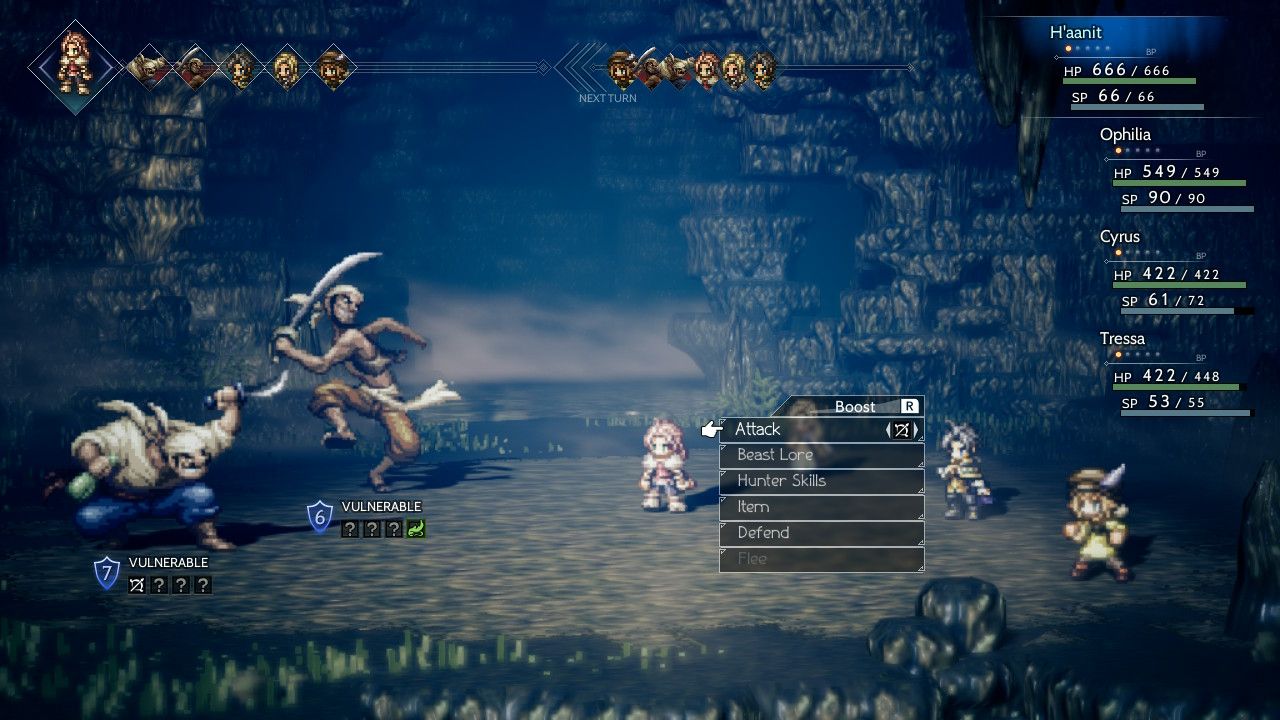
The breadth and scope of the game might seem slightly intimidating, and while the narrative isn’t necessarily the best-written (or best voice-acted) JRPG, Octopath Traveler is full of entertaining and thoughtful moments that compel you to care about the cast. There’s a sullen master thief with a troubled childhood, a beast-taming huntress scouring taverns for her gambling-addicted village elder, and a feisty cloistered merchant looking to break out of her sleepy port-side town. Generally speaking, Octopath Traveler doesn’t leverage the kind of epic, universe-shattering story-line that tends to dominate other JRPG franchises, with a branching individualized plot structure that revolves around personal objectives of world travel. It's just that when that world looks as good as it looks here, these objectives are an ideal driving force to want to keep playing.
The most interesting new genre feature here is arguably the Path Actions system, which grants each party member a special ability that they can use to engage NPCs in a variety of ways. While these abilities are necessary for many of the game’s simplistic side quests, they can also be used constantly and virtually everywhere, leading to secret items, shop discounts, and numerous other bonuses. For example, the thief character has a “steal” ability, which means that you can pickpocket most any NPC in the game, and while some of them have simple vendor trash like healing items, others may have excellent and unique weapons and armor. Feel bad about stealing? Another character’s ability allows her to purchase these items instead, or you can use yet another skill to investigate the NPC and read a short backstory, letting you decide whether they’re worth stealing from.
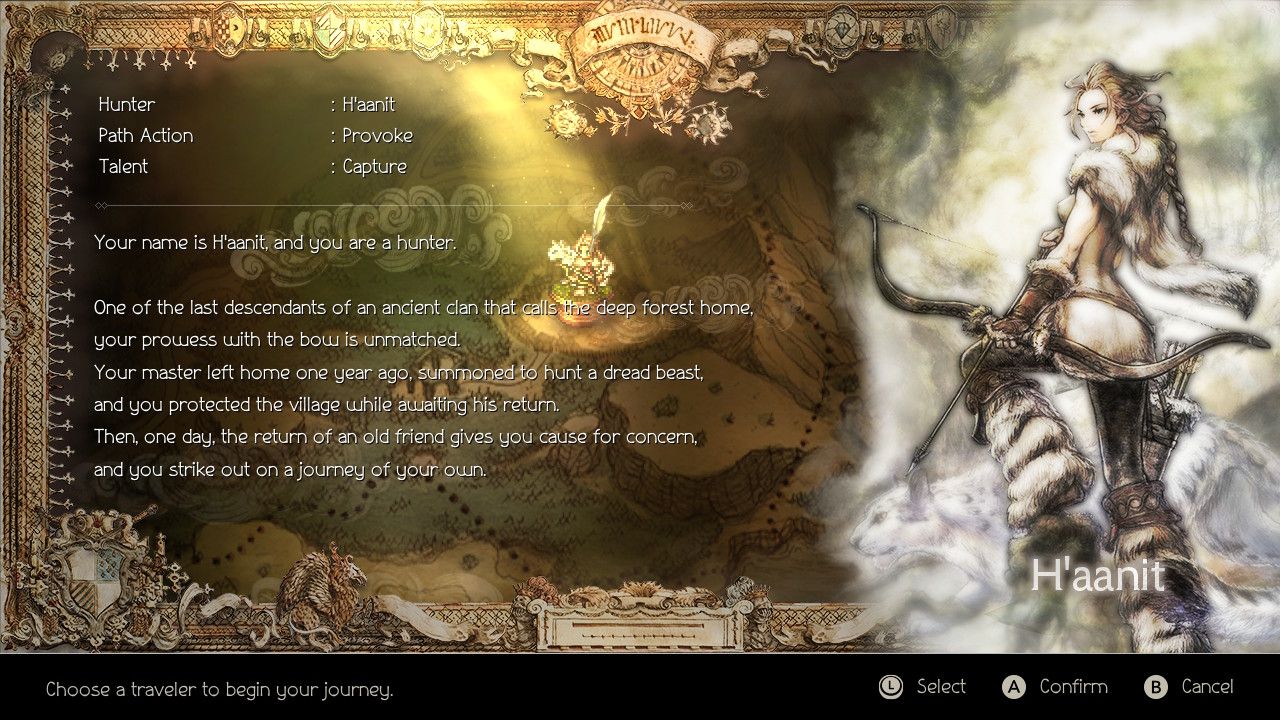
Path Actions expand interactivity in the game’s cities greatly, an interesting feature considering that most JRPG towns are little more than hubs for shopping and listening to repetitive dialogue. In Octopath Traveler, these abilities turn cities into interactive hotspots, making you want to explore each area thoroughly, which adds a compelling, Pokemon-like “gotta catch 'em all” quality to the experience.
No matter which character you start the game with, players who are ready for a time-consuming and mesmerizing escape into an excellent JRPG will free-fall into the hundreds of potential hours available in Octopath Traveler. It’s a hearty summer beach novel of a game, and aside from being an instant recommendation, it might even be one of the best new reasons to buy a Nintendo Switch.
5/5
More: Bloodstained: Curse of the Moon Review - Castlevania In All Things But Name
Octopath Traveler is available now for the Nintendo Switch. Nintendo provided a copy for review.
from ScreenRant - Feed https://ift.tt/2mcGHFl
via IFTTT







0 comments:
Post a Comment